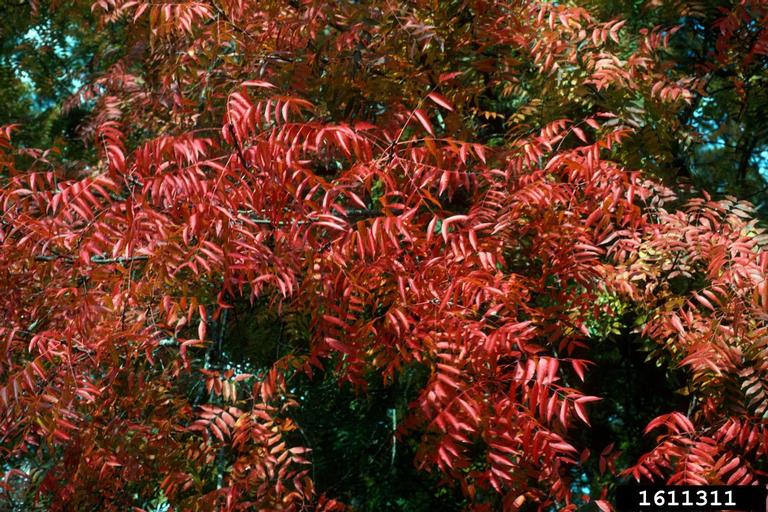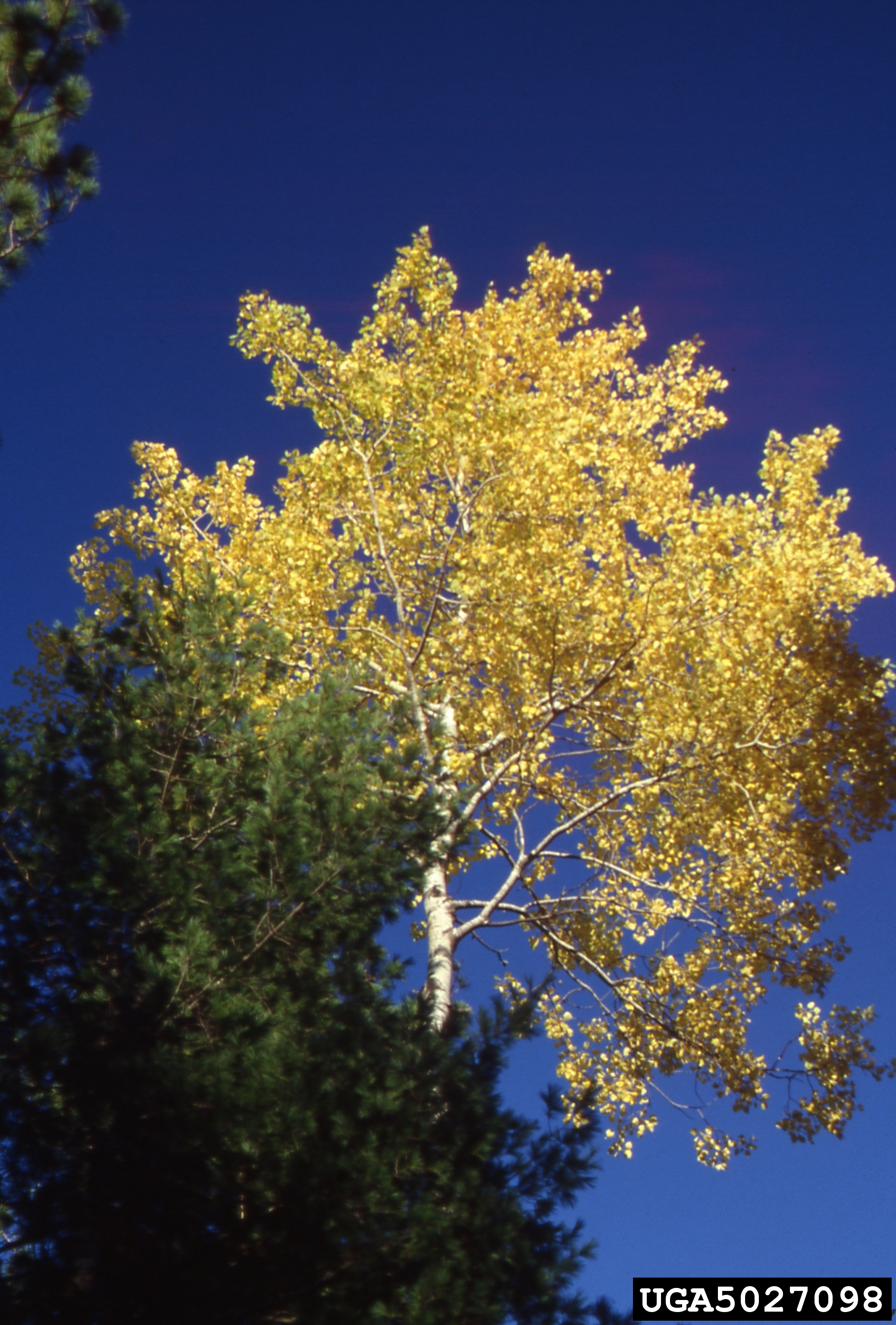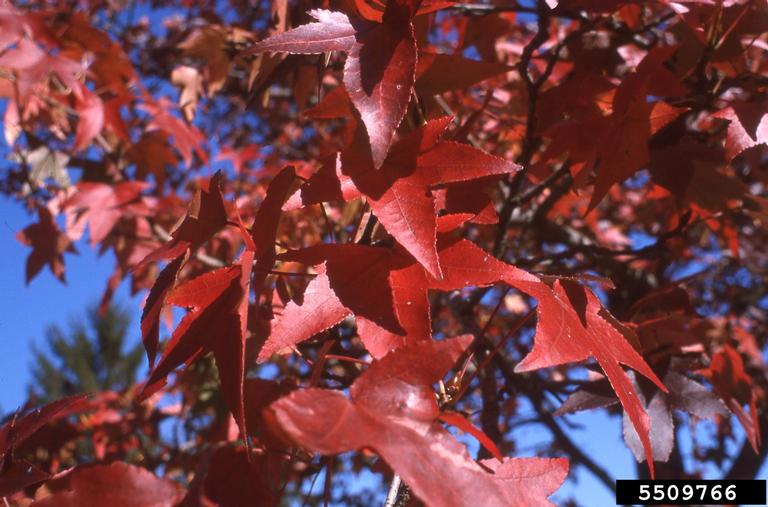 Autumn Leaves - September 26, 2018 Jeff Schalau, Agent, Agriculture & Natural Resources University of Arizona Cooperative Extension, Yavapai County Chlorophyll, the green pigment in plant leaves, captures light energy then transfers and stores it as chemical energy in sugars and starches: this is the process of photosynthesis. Although chlorophyll is the best known of the plant pigments, other pigments are present in plants. Carotenoids are the yellow and orange pigments in carrots and other yellow/orange vegetables. Anthocyanin pigments are purple and red plant pigments and found in red cabbage, chard, and turnips. Carotenoid and anthocyanin pigments are present in most plant leaves throughout the growing season, but are masked by chlorophyll. As fall approaches, we may observe leaves changing color from green to yellow, orange, red, and even purples. Fall leaf colors are produced when weather interacts with physiological plant processes to cause color changes. Chlorophyll formation also slows down. A decrease in green pigment allows the yellow pigments to become more visible. Chlorophylls and carotenoids are held within membrane-bound structures within the leaves called plastids. Anthocyanins are produced by different processes and are found in the cell sap (cytoplasm). Fall weather conditions favoring formation of brilliant red autumn color are warm sunny days followed by cool, nights with temperatures below 45 degrees F. Much sugar is made in the leaves during the daytime, but cool nights prevent movement of, sugar from the leaves. When this occurs, sugar breakdown process changes leading to the production of anthocyanin and results in red to purplish fall colors. Different plant species have varying ratios of chlorophyll to other pigments. They also have widely varied physiological processes and leaf chemistry. This is the reason for the wide variation in fall color between deciduous tree species and even individuals within the same species. Aspens have little or no anthocyanin while Rocky Mountain maples have enough to make them pink to red. Purple leaf plum trees have abundant anthocyanins throughout the growing season. Landscape trees that provide the most reliable fall color in the Verde Valley are: sweet gum (Liquidambar styraciflua) which has many named varieties that produce yellow, orange, red, and purple fall color and Chinese pistache (Pistacia chinensis) which produces rich red fall color. As for native plants, Virginia creeper (Parthenocissus vitacea), three-leaf sumac (Rhus trilobata), and bigtooth maple (Acer grandidentatum) produce great red color while quaking aspen (Populus tremuloides) and Arizona ash (Fraxinus arizonica) produce yellows. Another small, annual plant that is turning red everywhere on the forest floors is fetid goosefoot (Chenopodium graveolens). It turns a deep red and has a strong, sage-like smell. What happens to the deciduous leaves after the fall color show? The technical term for leaf drop is abscission. In deciduous trees, the attachment of the leaf to the stem is designed to fail at the proper time. This abscission zone is characterized by two or more layers of cells: some with poorly developed cells walls to make it purposely weak and others that form a protective layer that can be “walled off” and sealed after the leaf drops. A leaf is an expensive investment for any plant. To simply allow it to drop would be a great waste. Before leaves drop, many complex molecules are broken down into smaller units and transported from leaves into stems, down the trunk, and into the roots. This allows deciduous forest trees to survive in nutrient poor environments by salvaging many of the amino acids, sugars, lipids, and nucleic acids from the leaves before they fall. After the tree has recycled many of the materials, other processes take over. Auxin (a plant growth hormone) levels decrease in the leaf, ethylene production increases, and enzymes are secreted that weaken the abscission zone to the point of separation. The leaf drops to the ground. Here, they lie until soil microbes, worms, and insects help decompose them to release the remaining nutrients for the plants to use again. The organic matter contained in the leaves is eventually broken down even further until all that remains is humus which improves soil structure and tilth. Sometimes fall colors are not as brilliant as we’d like. On occasion, hard freezes can damage leaves before the nutrient salvage process is complete. This prevents the brightest colors from showing through. Conversely, very warm autumn temperatures accelerate the processes within leaves and thus shorten the length of time that the colorful leaves remain on plants. Warm temperatures also reduce the amount of red pigments produced in leaves. What will this year bring? See below for fall foliage photos. Follow the Backyard Gardener on Twitter – use the link on the BYG website. If you have other gardening questions, call the Master Gardener help line in the Camp Verde office at 928-554-8992 or e-mail us at verdevalleymg@gmail.com and be sure to include your name, address and phone number. Find past Backyard Gardener columns or provide feedback at the Backyard Gardener web site: http://cals.arizona.edu/yavapai/anr/hort/byg/. Photos  Fall color of Chinese pistache, Pistacia chinensis), (John Ruter, University of Georgia, Bugwood.org).
Fall color of Chinese pistache, Pistacia chinensis), (John Ruter, University of Georgia, Bugwood.org). Fall color of quaking aspen, Populus tremuloides), (Joseph OBrien, USDA Forest Service, Bugwood.org).
Fall color of quaking aspen, Populus tremuloides), (Joseph OBrien, USDA Forest Service, Bugwood.org). Fall color of Liquidambar (also called sweetgum), Liquidambar styraciflua), (T. Davis Sydnor, The Ohio State University, Bugwood.org).
Fall color of Liquidambar (also called sweetgum), Liquidambar styraciflua), (T. Davis Sydnor, The Ohio State University, Bugwood.org).Song: Autumn Leaves Autumn leaves by Nat King Cole from the Album "Unforgettably Yours" (Licensed to YouTube by: Kontor New Media Music, INgrooves (on behalf of Revisited Media Inc.); Kobalt Music Publishing, SODRAC, SOLAR Music Rights Management, EMI Music Publishing, and 10 Music Rights Societies). |